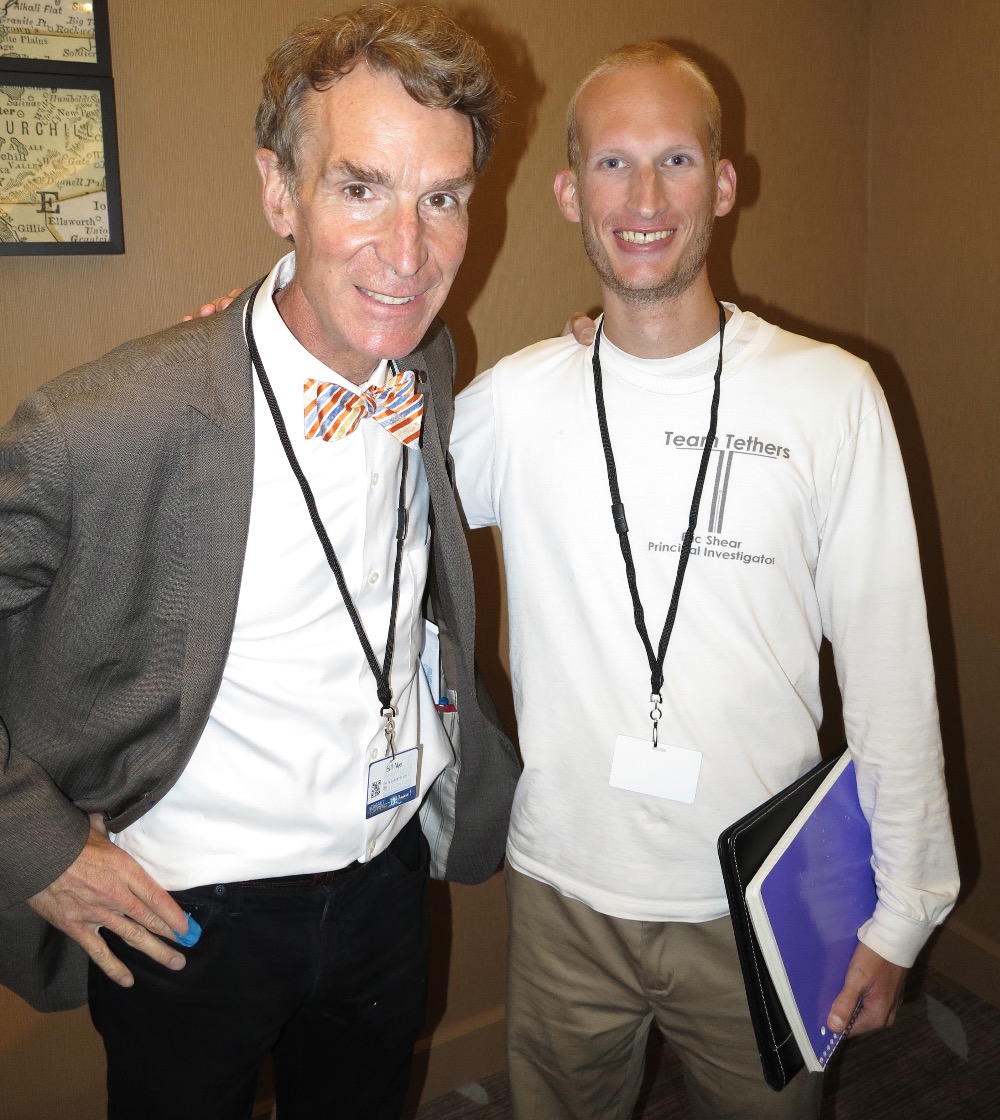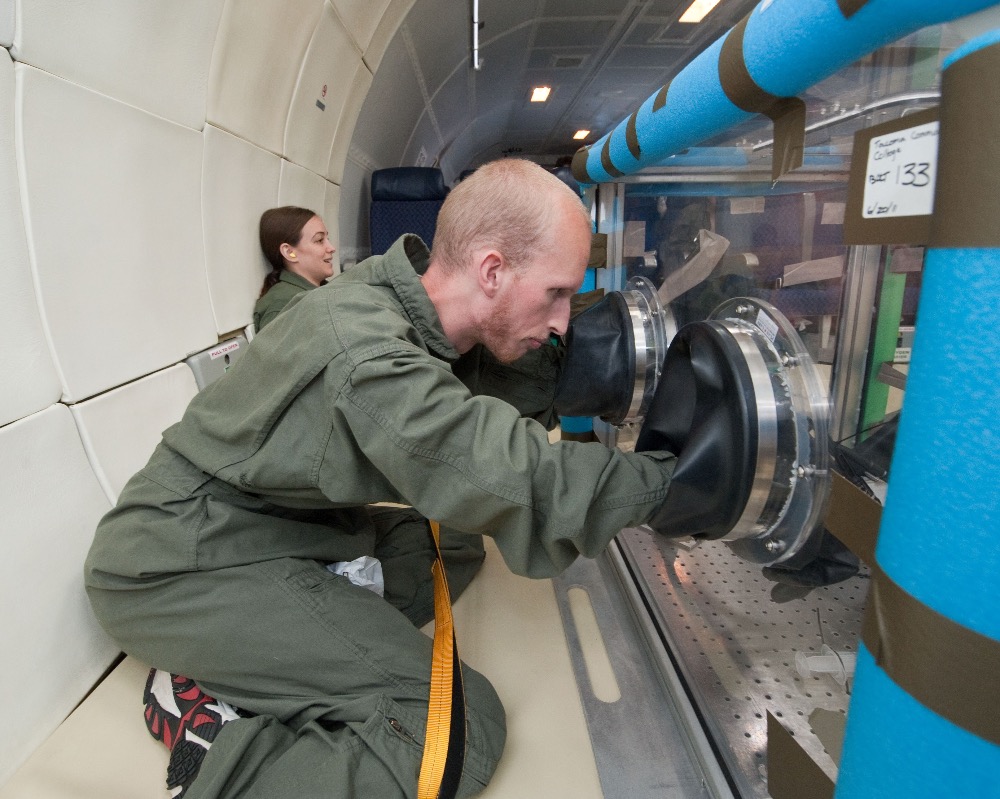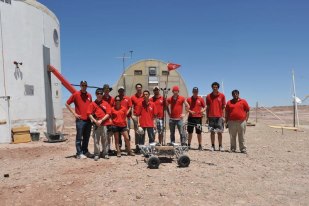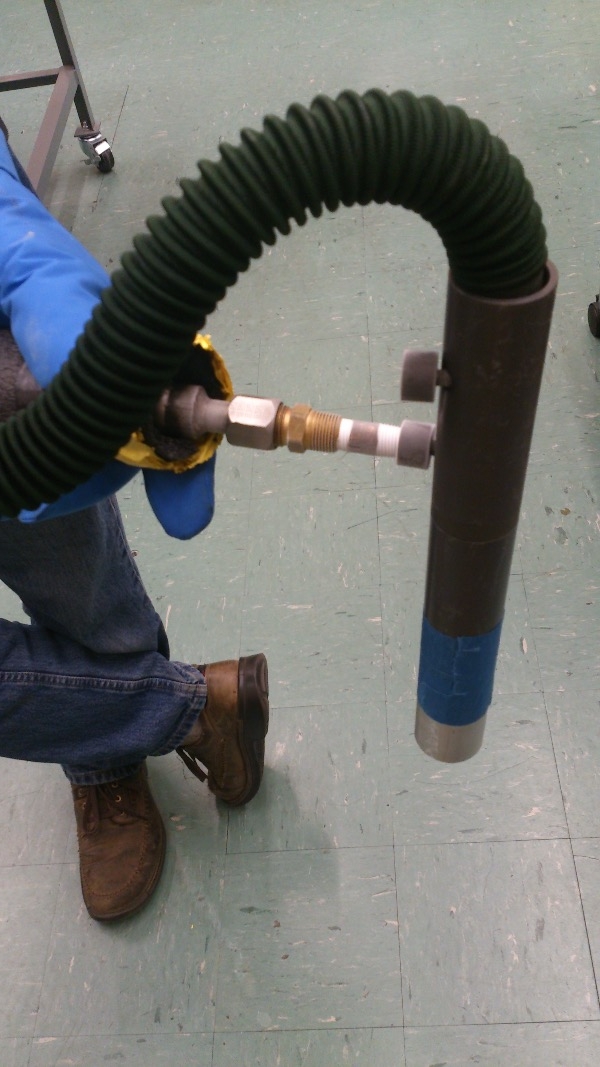
The World's First Deaf Astronaut!
Introduction
Hello, my name is Eric Shear. I am asking for donations to help pay off my financial commitment to the PHEnOM Project at the SeaSpace Exploration & Research Society, of which you can read more here .
The PHEnOM Project at the SeaSpace Exploration & Research Society is training a handful of citizen-scientist astronaut candidates. Most learning is taking place online, and the first on-site training period will be this December in Florida (with a makeup the following March). The entire program will take two years. After that, I will be eligible to fly on suborbital flights as a payload specialist.
I was accepted to this program along with a few other exceptional individuals after a competitive selection process. Because of the expected shortage of suborbital flights in the near future, PHEnOM will only have 20 scientist-astronauts at any time, in order to maximize the number of flight opportunities per astronaut. This means that if I drop out now, I might not get another chance.
The only obstacle right now is money. I'm short on it, and the total cost is $12,500. As an university research assistant, I'm getting paid just enough to cover my food and rent, not much more. I would appreciate it so much if you could help out!
About Me
I am a recent graduate of York University in Toronto, where I majored in space science. I am now pursuing a master's in York's graduate program in space science and engineering. Before York, I studied mechanical engineering at Tacoma Community College in my home state of Washington. Space is my passion. I consider myself both a scientist and engineer.
My passion has taken me from doing experiments in microgravity on the Weightless Wonder parabolic aircraft with NASA in June 2011...


...to winning the Mars Society's University rover competition with York's team in 2012...

...and developing and testing a carbon dioxide scrubber prototype (2015-present). 
I also have been deaf from birth. It has not stopped me from pursuing my dreams, nor has it stopped me from working with my hearing classmates and coworkers. And, yes, PHEnOM was 100% aware of that before I applied :)
About the Program
The PHEnOM Project is a commercial human spaceflight research program. We fly our own microgravity research payloads, and if it fits the needs of an industry partner, their research and/or payload. We also conduct ground-based and analog environment research.
All PHEnOM Citizen Scientist-Astronaut candidates will receive commercial space suit training, which is necessary for the level of research that we'll be conducting in collaboration with Final Frontier Design (FFD) through 2016 and 2017 (at a minimum). As a program, we have also moved forward with the purchase of a "Terra" (ground training) suit from FFD, and will place a deposit on a flight-ready suit in Q3 of 2016.
Training that does not require a practical skills element (didactic course work) is delivered via our online learning system, and includes several courses that come with academic credit through Embry-Riddle and Mercer University. Our curriculum is also currently under review by the University of Houston and the University of Texas Medical Branch. Georgia Tech recently contacted us with an interest in joining as an academic partner. We also receive language training through Rosetta Stone. This will enable our fluency in other markets, specifically in the emerging markets of Latin and Central America. After all, the commercial space industry is a global marketplace, and there are no borders in space.
The onsite skills training for 2016 is scheduled for mid-December in St. Augustine, Florida, and will include:
Aerobatic flights with Patty Wagstaff. This is to train us to endure the G-forces involved in being an astronaut.
Commercial space suit familiarization and operator training with Final Frontier Design. FFD is a spacesuit company based out of Brooklyn, NY.
High-altitude chamber rides/hypoxia awareness training with Dr. Paul Buza of the Southern Aeromedical Institute (in addition to the training, we will begin a formal research study with Dr. Buza during this time).
There will be two additional onsite group trainings in 2017 which include a week-long mission simulation training using REAL Air Traffic Control scenarios and formal grading by professional flight training instructors in our own simulator. The mission simulations will progress from fixed wing aircraft through commercial spacecraft simulations, and will involve the Mission Support Specialists and the Citizen Scientist-Astronauts working together as cohesive teams.
During the same time, we'll participate in a workshop on the use of UAV/UAS for remote sensing and mapping for some of our ground-based research work.
The second onsite skills workshop in 2017 will be 10 days and will include emergency egress and survival training, and a NOLS wilderness expedition (similar to the course that NASA uses).
Throughout the entire program we will work together as a group to prepare grant proposals, write abstracts to present at conferences, and develop research protocols. We will also work to advance and develop new technologies with an eye towards commercialization. We have an academic partner (Middle Georgia State University School of Aviation) that has a great composites lab who will be helping us with prototyping and the design and construction of our simulator. They are currently contracted through NASA to develop a variety of elements of the James Webb Space Telescope.
In closing...
It would mean the world to me (no, several!) if I could participate in this program. Being an astronaut is a dream I have not let go of since I was a toddler, not even with the challenges I have faced along the way.
Anticipated Questions
"What kind of space vehicles would PHEnOM astronauts be flying on?"
No suborbital vehicles are flying as of February 2016, but the recent success of Blue Origin's New Shepard reusable rocket makes it very likely that suborbital research will take off in the next few years (pun intended).
Besides the New Shepard, there are a couple of other vehicles under development - SpaceShipTwo from Virgin Galactic, and Lynx from XCOR.
"Is PHEnOM affiliated with NASA in any way?"
No.
"Are there any problems with flying a deaf astronaut?"
Since I would not be piloting the vehicle, the demands of radio communication aren't as great. Rather, I would be carrying out experiments inside the vehicle. It would be no different from my experience on the Weightless Wonder parabolic aircraft in June 2011, except that I would be in a spacesuit!
"What is the difference between suborbital and orbital flight?"
Even though both types of flight would pass the von Karman line at 100 km that delineates the boundary to space, they have very different profiles. To enter orbit, a spacecraft must accelerate to a high enough tangential velocity that it can fall around the earth without hitting it. This takes 400 times more energy than it would take to *just* break the von Karman line and fall back down.
PHEnOM has no orbital flight slots, but it may be possible, as commerical spaceflight capabilities develop, to obtain orbital flights when they become available.
Organizer
Inspired to help? Start a fundraiser for someone you know


